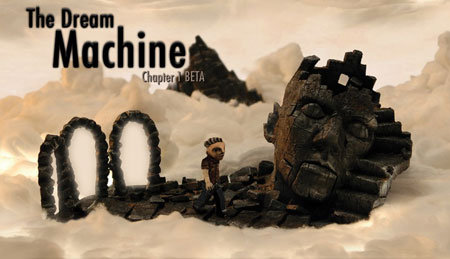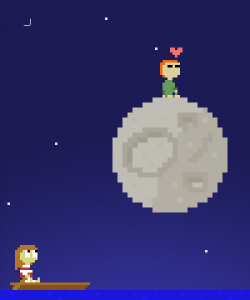
Last month, I found out last-minute about an IGDA Los Angeles meeting. The guest speaker was Mark Cerny. No way I was gonna miss out on that! I’ve been super inspired by the stuff I’ve read about him, like working on some of my dream projects (I wanted to work on Sonic 2 when I was 8 years old 🙂 ). I left work on time and ended up getting lost on the UCLA campus, but I managed to catch the tail end of the presentation.
My coworker was smarter than me and actually saw the whole talk. His synopsis described what I missed — like Mark talking about the arcade business back in the 80’s. Arcade programming was tough because each game ran on new hardware so programmers never got the opportunity to master the hardware. With consoles, the benefit was that they had a lot of time to learn all of the inner working, tricks, reusing engines, and whatnot. Something like that, ha.
When I jumped in, he was getting to some points. Game budgets are commonly exceeding $20 million. He made fun of no game development team being complete without a “combat designer”. The leap from vertices to pixels has taken its toll on the industry during this generation. But there is hope.
There’s hope in taking the time to actually learn the craft. There’s hope in learning what is and isn’t important. There’s hope in breaking out of budget climbing.
UN-learning
Mark stressed importance of UN-learning. Learning is easy, unlearning is hard. He focused this unlearning around many of the conventions of games inherited from the Arcade Era.
Arcade based games have frequent death and great difficulty at the end. He then did a quick overview of 30 years of arcade style games.

- Dragon’s Lair had simple gameplay but required players to memorize each sequence to complete the game.
- Space Ace was designed to be hard as hell for people that mastered Dragon’s Lair.
- Robotron was mentioned because difficulty was the appeal of the game.
- Mario 3 was a great example of an arcade game because even though it was a console game, it worked great as Play Choice arcade release.
After that, he talked a little about the Crash Bandicoot games he worked on. The first Crash Bandicoot was hard as shit. In it, you had limited number of lives and although you could restart from the same level, you had to progress to and complete a bonus stage just to save your game. With Crash 2 they had more consumer awareness, they tested it more for difficulty. The players performance in the game is tracked and the game helps when possible.
Dynamic Difficulty
He then talked a bit about dynamic difficulty in games, sometimes you notice and sometimes you don’t. The first example was Sly Cooper, in which the Sucker Punch “solved” jump problems. The solution was that if you missed a jump a certain amount of times as cartoon hook would grab you and put you where you need to go. Maybe not the ideal solution, but it fit the vibe of the game’s world.
Next he mentioned Ratchet & Clank, where reviewers had a problem because the difficulty adjustment was too obvious. When you die too much in Ratchet & Clank, boxes that would normally drop money start dropping health. Last he mentioned Uncharted but just that many people didn’t realize that Uncharted had dynamic difficulty systems, he didn’t go into anything specific.
End of Death
We are fighting our arcade heritage. If you aren’t dying, you aren’t playing. Is Farmville a game? Even though you can’t die?
I think this was an important point. Many games I love for the challenge, like a Mario game for instance, but many other games I enjoy more for the experience, like NiGHTS. Mark asked the crowd to raise their hands if they thought Farmville was a game. There were some vocal Farmville haters expressing that they didn’t think these kinda games were games at all. Is it because you can’t die? No clear challenge or goal?
I don’t think they are good games, but it’s kinda hard to deny that they share much of the same basis of the games we all love.
Can a game be enjoyable without rewards and punishment? I’ve been playing Earthbound recently, and I’m into it solely for the story and scenario. I feel like I could skip out on much of the “game” of it and have a great time. I’m willing to experiment with these ideas.
Today’s Vocabulary
At the end, Mark talked about today’s gaming vocab, we have “co-op”, “social game”, “3rd-person-shooter”, “deathmatch”, etc. But we need new words for new social paradigms. His example of this was Demon’s Souls. It’s a single player action RPG… but it has many forms of social interactions. But not necessarily directly. For instance, you can leave messages for other players and your spirit shows up in other players games. So what do you call that?
Q&A
I believe during Q&A he states that he thought 80-90% of games could work with socialization and monetization. I agree with this, and this seemed to be his point of “un-learning”. Developers need to stop thinking of “social-games” as leaderboards and Farmville.
When asked something about independent development without a publisher he said that it’s possible to scrape together enough cash to make a console game but even if you manage to do that, you’d need a publisher for marketing. With a console game having about $10 million marketing. On the subject of the iPhone market he said something like “There’s someone successful out there. Odds are that’s not you.”
That’s it!
One of the most interesting things he said was pointing out that gaming has sort of come full circle. People are scared and violent towards the trends of monetization of social gaming. But it’s the same concept that the industry was founded on — arcade machines eating players quarters to cover development costs.
I think it’s best to embrace it if you can, think about it differently and find a way to make it work for you.
Some Links:
 Looking forward to seeing the games out in front of people again! The stats say that lots of people play our games, but it’s always a different story seeing people experience them.
Looking forward to seeing the games out in front of people again! The stats say that lots of people play our games, but it’s always a different story seeing people experience them.
















 When asked whether there would have been a loading screen when switching times in
When asked whether there would have been a loading screen when switching times in 





